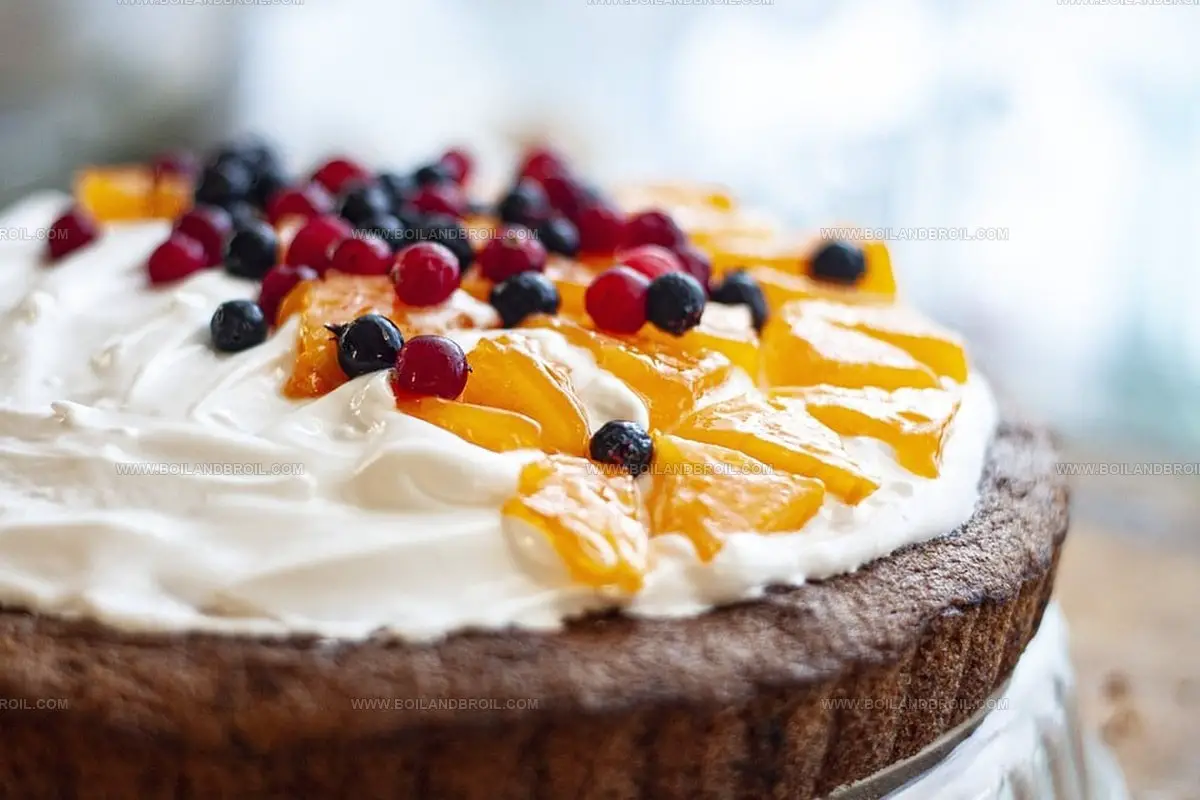What Does Bavarian Cream Taste Like? The Sweet Mystery Revealed
Bavarian cream, a luxurious dessert with French and German culinary roots, has intrigued food lovers for generations.
Elegant pastry chefs have long considered this delicate confection a hallmark of sophisticated baking techniques.
Smooth and incredibly versatile, this cream-based treat offers a unique experience that goes beyond simple dessert expectations.
Many people wonder about its distinctive characteristics and why it stands out among other classic desserts.
Professional bakers appreciate its complex preparation method, which requires precision and skill to execute perfectly.
The texture and composition of Bavarian cream make it a fascinating subject for those passionate about culinary arts.
Your curiosity about this remarkable dessert is about to be satisfied with an in-depth exploration of its delightful nuances.
What Is Bavarian Cream?
Bavarian Cream sits as a silky smooth dessert meant to be chilled and served on a plate with fresh fruit scattered around.
Creamy goodness comes from mixing whipped cream with a custard made purely from egg yolks, then letting it set in the cold.
Fancy restaurants love serving this sweet treat, and cooks can use it inside cakes or as a standalone dessert.
Anyone can make this special dish at home without much trouble.
Culinary history shows French chefs spent time working in Bavaria during the 1700s, which might explain how this recipe came to be.
Experts suggest Marie-Antoine Careme, a well-known French cooking master, wrote down the first recipe in the early 1800s.
People now enjoy Bavarian Cream as a rich dessert or as a filling for different kinds of sweet baked goods.
Flavor of Bavarian Cream
Bavarian cream brings a smooth vanilla taste from its creamy custard base.
People make this dessert using vanilla custard mixed with special ingredients.
Milk and gelatin come together to create this sweet treat.
Whipped cream gives the dessert its light and fluffy feel when carefully mixed in.
Bakers love using this cream on cakes, muffins, and other pastry favorites.
Chefs can add different flavors to make the cream unique.
Soft and rich, this dessert works well as a topping or filling for many sweet dishes.
Mixing carefully helps the cream become thick and smooth.
Cooks can choose natural or artificial flavors to make their version special.
Professionals recommend checking calories for those watching their diet.
Bavarian Cream vs. Custard
Bavarian cream is not the same as custard.
Instead, it’s light and airy like mousse, with a soft vanilla flavor that’s both fluffy and delicious.
While it may look a little like custard, the taste and texture are much closer to a smooth mousse.
How Bavarian Cream Tastes
People are often surprised when they try real Bavarian cream, since it’s often confused with custard.
The truth is, it’s much lighter and fluffier than classic custard and tastes more like a rich, creamy mousse.
It has a soft, buttery flavor and is sturdy enough to be used as a filling, but it’s also good enough to eat on its own.
Regular pastry cream (or confectioner’s custard) is thicker and sweeter, with a strong egg flavor and a smooth, sometimes slightly grainy texture because of the starch.
The difference really shows up in how each one feels and tastes.
How They’re Made
Pastry cream, also called crème pâtissière, is a cooked custard made with eggs, sugar, milk or cream, butter, and flour or cornstarch.
It’s used in many desserts, like eclairs, as a rich and creamy filling. Bavarian cream, while it shares some of these ingredients like egg yolks, sugar, and milk, is different because it also has whipped cream or gelatin added to make it thicker and lighter.
This makes Bavarian cream perfect for spooning into molds or using as a fancy dessert filling. In short, Bavarian cream is airy and mousse-like, while custard is thicker and richer, each with its own special place in desserts.
Bavarian Cream vs. Boston Cream
Boston cream and Bavarian cream are often confused, but they are quite different in texture, ingredients, and history:
What They Are
Boston cream is most famously known as the filling in the Boston cream doughnut (sometimes called a Boston cream pie doughnut).
It’s made with a custard-style vanilla filling and topped with chocolate icing. Bavarian cream (also called crème bavaroise or bavarois) is a classic French dessert.
It’s a custard-based cream lightened with whipped cream and set with gelatin, giving it a more solid, mousse-like texture.
History
Bavarian cream first appeared in Boston Cooking School cookbooks in 1884, credited to D.A.
Lincoln, though its origins trace back to France.
Boston cream pie predates that, created in 1865 by French chef Augustine Francois Anezin in the United States.
Texture & Category
Boston cream is smooth and creamy, usually used as a pastry or doughnut filling. Bavarian cream is firmer, standing more like a molded dessert or thick filling. Category-wise, Bavarian cream is considered a custard-based dessert, while Boston cream is primarily associated with doughnuts and pastries.
Ingredients
Bavarian cream typically includes:Boston cream is usually made with:Key Differences
Vanilla Pudding vs. Bavarian Cream
Ingredients set these two desserts apart right away.
Vanilla pudding relies on starch and offers a gentle taste.
Bavarian Cream comes together with eggs, gelatine, cream, and milk.
Methods for thickening differ between them.
Making vanilla pudding happens faster, but Bavarian Cream wins on flavor and smooth, airy texture.
Bavarian Cream Donut vs. Boston Cream Donut
Eggs, cream, sugar, butter, and cornstarch blend together to create smooth pastry cream for Boston cream donuts.
Filling gets cooked until it reaches perfect thickness.
Bavarian cream follows similar steps but adds whipped heavy cream to make it extra rich and creamy.
Tips for Making Bavarian Cream
Making Bavarian Cream requires several careful steps.




Jack Sullivan
Founder & Culinary Storyteller
Expertise
Single-recipe development with a narrative approach, Culinary storytelling and food history, Seasonal and regional ingredient utilization, Home cooking techniques adapted for modern kitchens
Education
New England Culinary Institute (Montpelier, VT)
Certificate in Culinary Arts
Focused on farm-to-table cooking, sustainable practices, and modern plating techniques.
Asheville-Buncombe Technical Community College
Associate Degree in Culinary Arts
Emphasized Southern Appalachian cuisine and local ingredient sourcing.
Jack grew up surrounded by smoky skillets and handwritten recipes in the mountains of North Carolina. His roots in Appalachian cooking shaped the way he sees food – as something that connects people, tells a story, and holds meaning.
With hands-on training and a background in sustainable, regional cooking, Jack started Boil And Broil to make meaningful meals more accessible. He’s all about one-dish recipes that are simple to follow but rich with flavor and history.